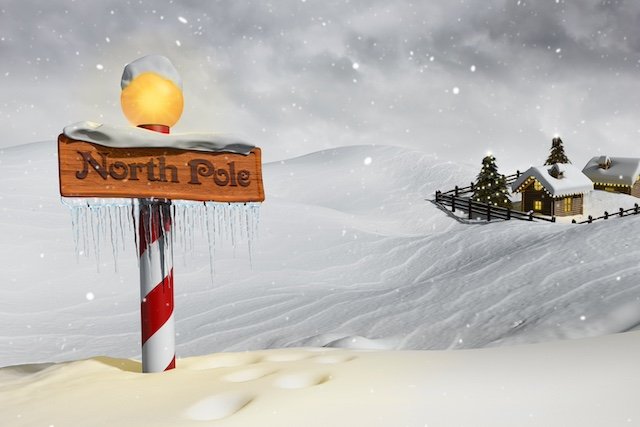Twice monthly, our editors dive into topics, industries, and news-of-the-day items in the BF Editors’ Blog that might be a bit different from our typical coverage. Have an interesting idea for a blog topic? Email our Associate Editor at kwilliams@groupc.com with “BF Editors’ Blog” in the subject line.
 By Kari Williams, Business Facilities Associate Editor
By Kari Williams, Business Facilities Associate Editor
Santa’s origin story is varied, but present-day versions of the myth lean heavily on his homebase being the North Pole. While it has served him well as he fends off disbelievers like the Grinch, Burgermeister Meisterburger, the Winter Warlock, and a plethora of others, his site selection process is worth reviewing.
So let’s break it down.
Location: Situated in the middle of the Arctic Ocean on shifting sea ice, The North Pole is isolated from nearly all other opportunities for economic and workforce development. Santa established his presence there in the 1800s, as evidenced by a Thomas Nast drawing featured in Harper’s Weekly. His move, according to Oceanwide Expeditions, coincides with a large amount of press surrounding Arctic expeditions at the time.

Quality of Life: The North Pole is part of the Arctic Circle, and, because of its location, travel and weather-related concerns make quality of life rougher than other, more landlocked, areas. Santa’s Workshop is the main employer, though some opportunities exist among oil, fishing, mining, and outdoor recreation industries. Employees might do well to live in nearby Whoville or Sombertown and make the commute to Santa’s Workshop.
 Workforce Development: Santa tends to only employ elves in his workshop, so the talent pool is limited despite the Arctic Circle including coastline cities from countries like Russia and Norway. There does not appear to be a workforce development program, which means there will eventually be a labor shortage in the areas of gift-making and sled repair. The fact that he has made it a couple centuries without such a shortage can only be attributed to the magic of Christmas.
Workforce Development: Santa tends to only employ elves in his workshop, so the talent pool is limited despite the Arctic Circle including coastline cities from countries like Russia and Norway. There does not appear to be a workforce development program, which means there will eventually be a labor shortage in the areas of gift-making and sled repair. The fact that he has made it a couple centuries without such a shortage can only be attributed to the magic of Christmas.
BF Editors’ Blog: Arts & Culture Energize Economies
Arts and culture outlets are as ancient as the economies with which they co-exist, and these forms of community and individual expression are as diverse as the communities, regions, and nations they support. Read more…
Capital Investment & Development Indicators: Because of the uncertainty of climate change and potential for the floating ice caps to melt, options to expand and grow at the North Pole are limited. Relocating to other areas — ideally those with shovel-ready sites — should be seriously considered.
Research and Development: Despite its relatively isolated location in the North Pole, there are opportunities for research and development for Santa’s Workshop and its associated industries. Scientists and researchers could establish a presence to conduct experiments to make Santa’s sleigh fly faster and/or to improve the cardio and musculature of the reindeer. Both would extend the longevity of Santa’s career — and the reindeers’, too. And maybe give Rudolph a break from always leading the charge.
Taxes & Incentives: Santa could establish workforce and tax incentive programs that would encourage characters like Frosty the Snowman or residents of the Island of MisFit Toys to relocate.
Transportation & Infrastructure: Santa’s main mode of transportation is a flying sleigh and reindeer. If additional transportation or infrastructure were established, that could create a stronger link between Santa’s workshop and The Island of Misfit Toys.






